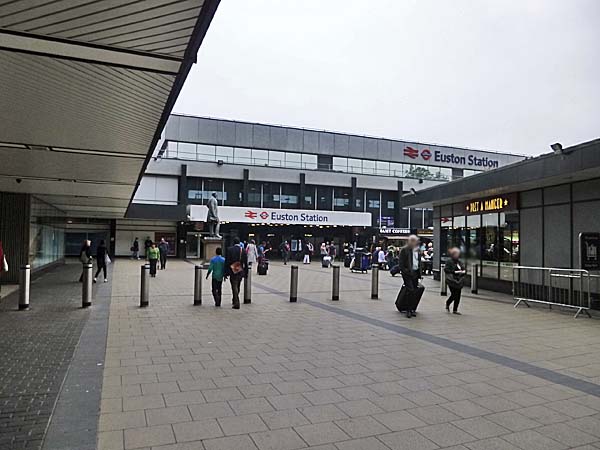These images of Euston
Station were taken in 2015. In recent
times its neighbouring stations along the
Euston Road have undergone significant
refurbishment. Despite threats to
demolish it, St Pancras was refurbished and
became an international station at the end
of HS1. Kings Cross now features a
spectacular new concourse and has emerged
once more from behind a mess of ugly
structures that passengers had to navigate
to get into the building. The Euston
we see in 2015 represents what British Rail
appeared to think was an improvement when it
demolished the original Victorian station in
the late 1960s. In the opinion of many
it is overdue for redevelopment. A new
station has been promised to act as the
terminus of the proposed HS2 line to
Birmingham and beyond. When, and
perhaps if, this will actually happen is
still to be determined.
In the images above and below you can
see the station building designed by R. L.
Moorcroft in 1968. It was built to
replace Philip Hardwick’s neo-classical
masterpiece of 1837. RIBA described
that building as, "... one of the
glories of the British railway age."
The Times described Moorcroft's replacement
as, "... the nastiest concrete box in
London." In an article on
the "building.co.uk" website it is described
as a, "... concrete
coffin that now masquerades as a station
concourse."
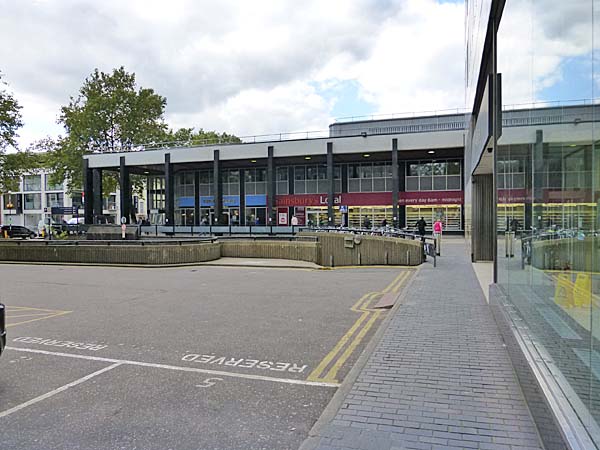
On the forecourt of the
new station Richard Seifert designed a
complex of buildings that incorporated three
low-rise office blocks and a linking block
that sits up on pillars.
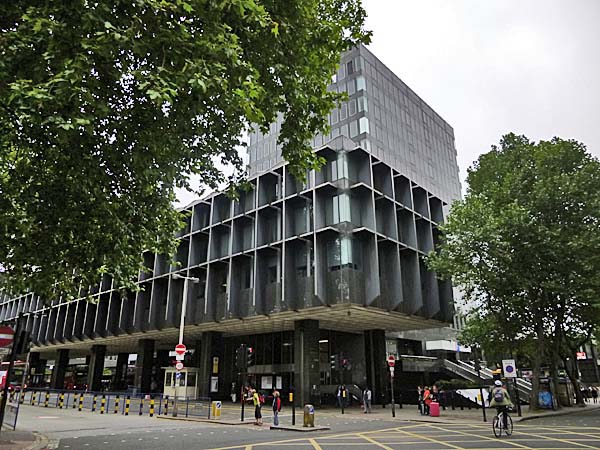
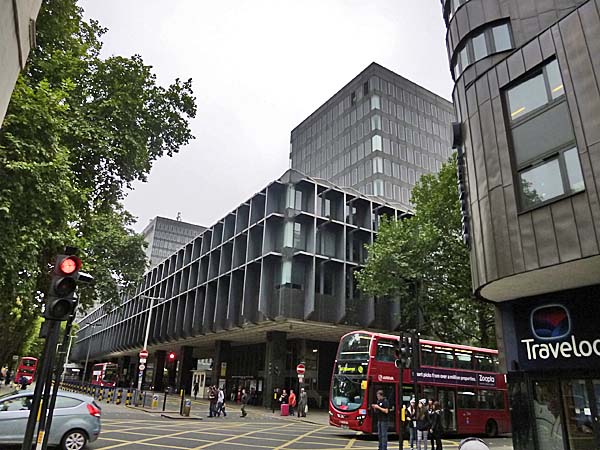
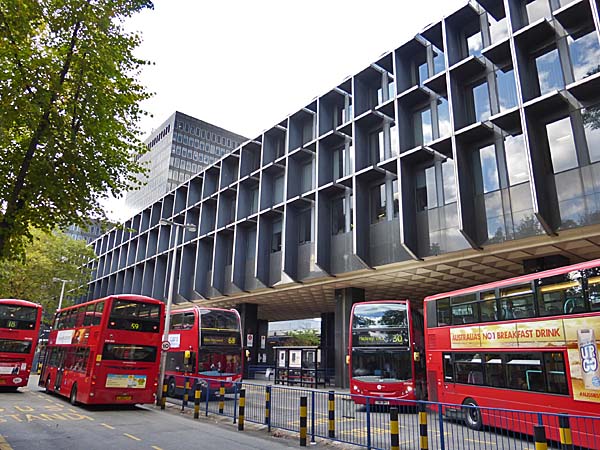
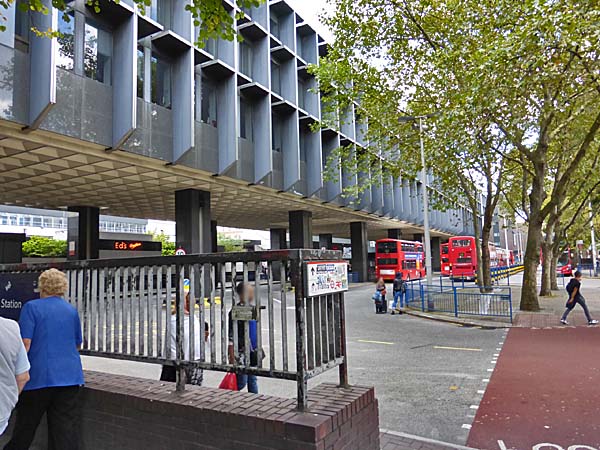

Mark Crinson, writing on
the 20th Century Society says of Seifert's
buildings that , "The svelte surfaces
of these towers combine polished black
stone, glass, and metal frames in one
solemn yet classy skin. The ground floor
spaces reward examination, and those
wonderful corner windows on the towers
are one of my favourite details in late
British modernism, reminiscent of the
glamorous discretion of a 1920s Viennese
shop front. Seifert’s designers had a
way with a sleek, rather continental
glamour – Mies meets
retro-moderne."
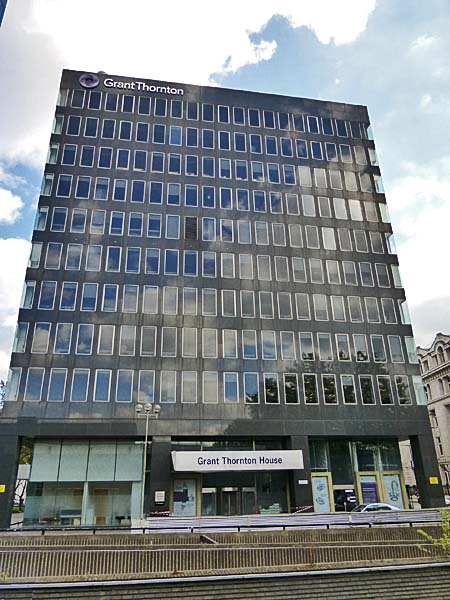
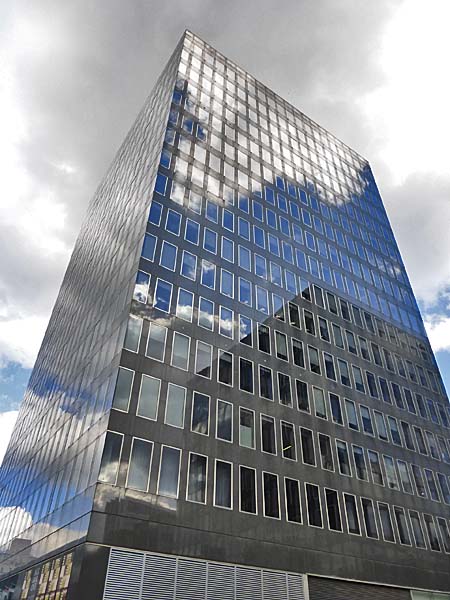
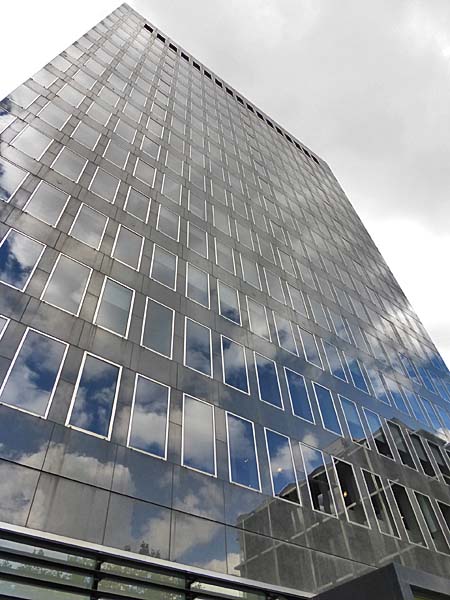
Also outside the station is this sculpture
by Sir Eduardo Paolozzi (1924- 2005) it was
installed in 1980 as a tribute to the
theatre director Erwin Piscator (1893-
1966).

